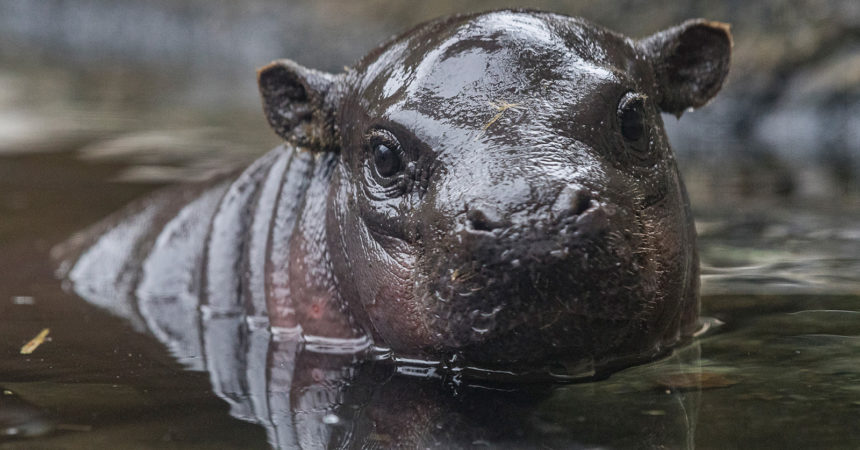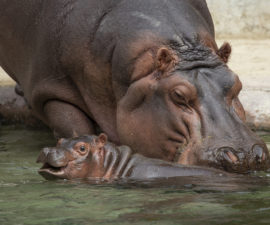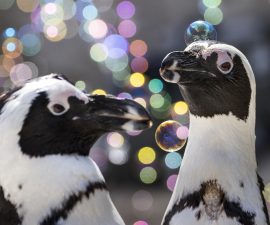This week, just in time for the San Diego Zoo’s official reopening to the public on June 20, a 2-month-old male pygmy hippopotamus and his mother, Mabel, graduated from their maternity habitat to the larger main pygmy hippo habitat in the Lost Forest area of the Zoo. The calf, now weighing 40 pounds, has been named Akobi, which means first-born in the Yoruba language spoken in West Africa.
Once in the main habitat, Mabel stayed close and guided Akobi while he explored the large pool and the rest of his new terrain. Mabel showed all of the maternal instincts wildlife care staff expected to see, including pushing him up and toward the edge of the pool when he ventured into deep water. This main habitat is also giving Akobi access to African cichlids, a species of fish that live in the pygmy hippo pool. The mixed species habitat also has primates—a pair of Wolf’s monkeys and a pair of lesser spot-nosed monkeys—that will be gradually introduced to the calf over this week.
“We’re excited to welcome guests back to the San Diego Zoo, so they can see this adorable calf who has brought his wildlife care team so much joy,” said Leanne Klinski, wildlife care specialist for primates. “Akobi is doing great at navigating the pygmy hippo habitat, and I look forward to seeing the interactions between him and the primates who live in this habitat, too.”
Mabel gave birth to Akobi on April 9, 2020. This is her first calf, and the first successful birth of a pygmy hippo at the San Diego Zoo in more than 30 years. Animal care staff are weighing the calf weekly and tracking his steady growth. They report that he has started mouthing Mabel’s food—especially lettuce and herbivore pellets—but he is still getting all his nutrition by nursing.
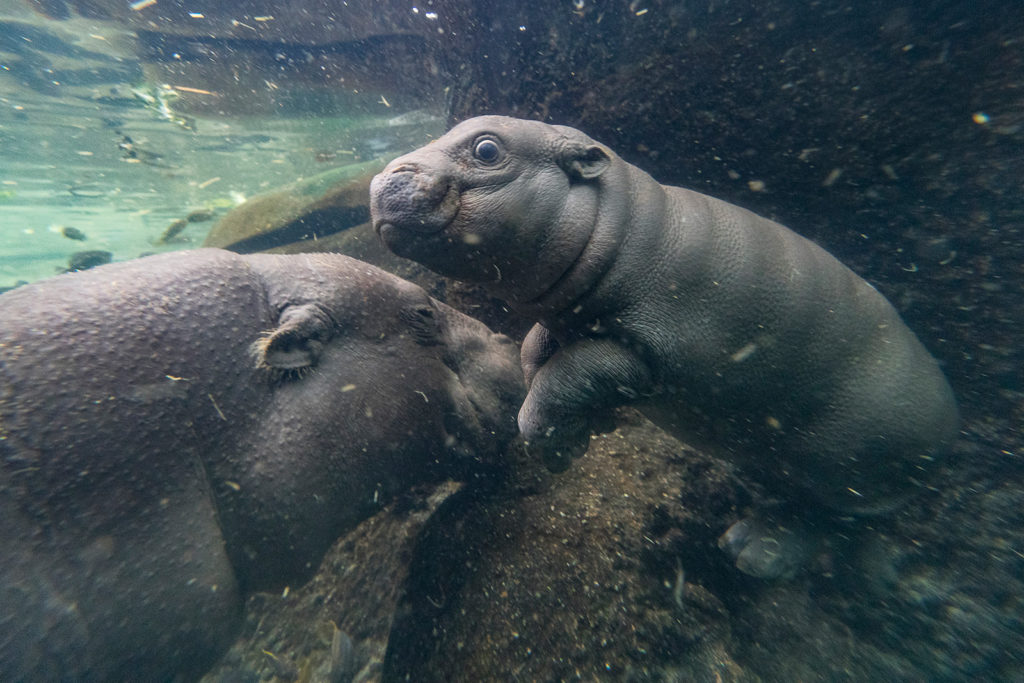
Zoo guests can see Mabel and Akobi in their Lost Forest habitat from morning until early afternoon, when 13-year-old male pygmy hippo Elgon enters the main habitat. Akobi will not have contact with Elgon, because pygmy hippos do not live in family groups and male pygmy hippos do not play a role in the rearing of offspring.
Pygmy hippos are listed as Endangered on the International Union for Conservation of Nature (IUCN) Red List of Threatened Species, and live in rivers and streams in the forests of West Africa. While their historic range was much larger, pygmy hippos are now found in only four countries: Côte d’Ivoire, Guinea, Liberia and Sierra Leone. Fewer than 2,500 pygmy hippos now remain in Africa, and the primary threats to this species’ population are logging, farming and human settlement in the areas where this species lives.
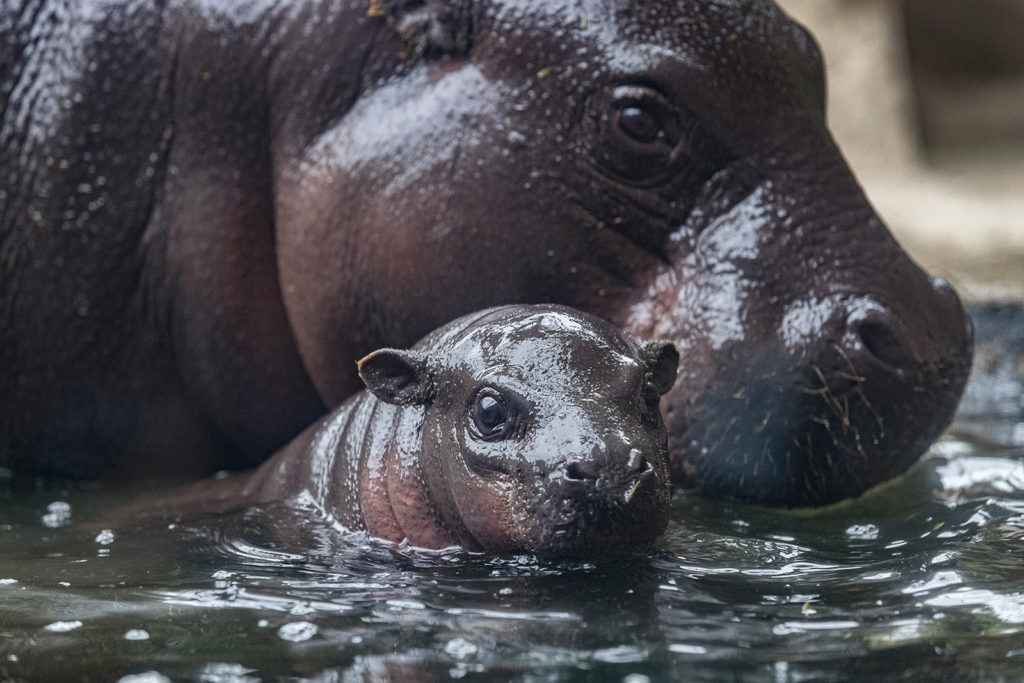
The pygmy hippo is related to the river hippopotamus, but is a different species. While they may look similar, they share few characteristics. A river hippo may weigh up to 10 times more than a pygmy hippo and can be more than twice as large—and pygmy hippos spend more time on land than in the water and are predominately nocturnal.
Bringing species back from the brink of extinction is the goal of San Diego Zoo Global. As a leader in conservation, the work of San Diego Zoo Global includes on-site wildlife conservation efforts (representing both plants and animals) at the San Diego Zoo, San Diego Zoo Safari Park, and San Diego Zoo Institute for Conservation Research, as well as international field programs on six continents. The work of these entities is made accessible to over 1 billion people annually, reaching 150 countries via social media, our websites and the San Diego Zoo Kids network, in children’s hospitals in 12 countries. The work of San Diego Zoo Global is made possible with support from our incredible donors committed to saving species from the brink of extinction.

